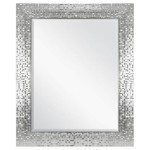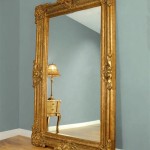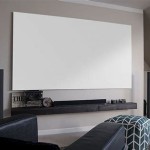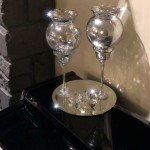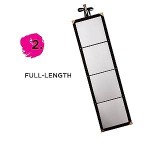Do Concave Mirrors Make Things Smaller or Bigger?
Concave mirrors, with their inwardly curving reflective surface, possess the fascinating ability to create both magnified and diminished images depending on the object's placement relative to the mirror's focal point. This unique property makes them invaluable in a variety of applications, from everyday objects like makeup mirrors to sophisticated scientific instruments like telescopes.
Understanding Concave Mirrors
A concave mirror is a spherical mirror where the reflecting surface is curved inwards, like the inside of a sphere. This curvature allows the mirror to converge incoming light rays, leading to the formation of real or virtual images. A crucial element in understanding concave mirror behavior is the focal point (F), the point where parallel light rays converge after reflection. The distance between the mirror's surface and the focal point is known as the focal length (f). Another important point is the center of curvature (C), the center of the sphere from which the mirror is a part. The center of curvature lies at a distance twice the focal length from the mirror.
Image Formation: Object Beyond C
When an object is placed beyond the center of curvature (C), a real, inverted, and diminished image is formed between C and F. "Real" signifies that the image can be projected onto a screen. "Inverted" indicates that the image is upside down compared to the object. "Diminished" means the image is smaller than the object.
Image Formation: Object at C
If the object is placed exactly at the center of curvature (C), the image formed is also at C. It is real, inverted, and the same size as the object.
Image Formation: Object Between C and F
When the object lies between the center of curvature (C) and the focal point (F), the image formed is beyond C. This image is real, inverted, and magnified (larger than the object).
Image Formation: Object at F
Positioning the object precisely at the focal point (F) presents a unique scenario. In this case, no real image is formed. The reflected rays are parallel and do not converge. Theoretically, the image is formed at infinity.
Image Formation: Object Between F and the Mirror
When the object is located between the focal point (F) and the mirror's surface, the image formed is virtual, upright, and magnified. A "virtual" image cannot be projected onto a screen; it appears to be behind the mirror. "Upright" means the image is oriented the same way as the object.
Magnification and Image Characteristics
The magnification of an image formed by a concave mirror is the ratio of the image height (hi) to the object height (ho). It can also be expressed as the negative ratio of the image distance (di) to the object distance (do): M = hi/ho = -di/do. A negative magnification indicates an inverted image, while a positive magnification indicates an upright image. A magnification greater than 1 indicates a magnified image, while a magnification less than 1 indicates a diminished image.
Applications of Concave Mirrors
The versatile nature of concave mirrors leads to diverse applications: *
Shaving mirrors:
When placed close to the face, a concave mirror provides a magnified, upright image, facilitating detailed viewing for shaving or applying makeup. *Headlights:
Concave mirrors in headlights reflect the light from the bulb outwards in a parallel beam, maximizing visibility. *Telescopes:
Large concave mirrors in reflecting telescopes gather and focus faint light from distant celestial objects, allowing astronomers to observe the universe. *Solar furnaces:
Concave mirrors can concentrate sunlight onto a small area, generating intense heat for applications like solar cooking or industrial processes.Mirror Equation and Calculations
The relationship between the object distance (do), image distance (di), and focal length (f) of a concave mirror is governed by the mirror equation: 1/f = 1/do + 1/di. This equation allows for the calculation of any one of these variables if the other two are known. It's important to adhere to sign conventions: distances measured in the direction of the incident light are positive, and distances measured against the direction of incident light are negative. The focal length of a concave mirror is always negative.
Spherical Aberration
While the simplifying assumptions of spherical mirrors are useful for basic understanding, in reality, spherical mirrors suffer from spherical aberration. This phenomenon occurs because light rays striking the mirror far from the principal axis do not converge at precisely the same point as rays closer to the axis. This results in a slightly blurred image. Parabolic mirrors are often used in applications requiring high image quality to minimize spherical aberration.
Objects In The Mirror Are Actually Images Article Khan Academy

Question Comparing The Sizes Of Images Produced By A Concave Mirror Nagwa
Objects In The Mirror Are Actually Images Article Khan Academy
Objects In The Mirror Are Actually Images Article Khan Academy
How Do Reflections From Convex Mirrors Make Objects Appear Smaller Quora
Objects In The Mirror Are Actually Images Article Khan Academy
Objects In The Mirror Are Actually Images Article Khan Academy

Convex Mirrors And Objects Larger Than The Mirror

Under Which Condition A Concave Mirror Can Form An Image Larger Than The Actual Object Quora

Convex Mirrors And Objects Larger Than The Mirror

